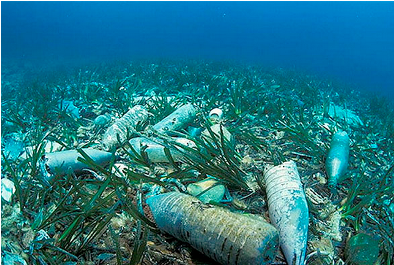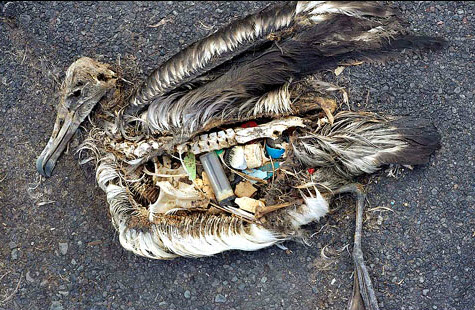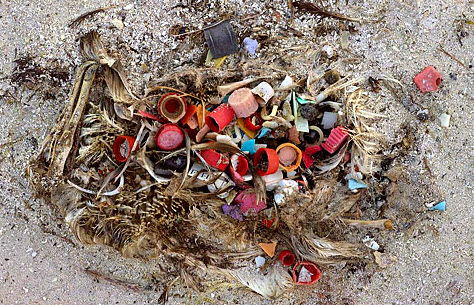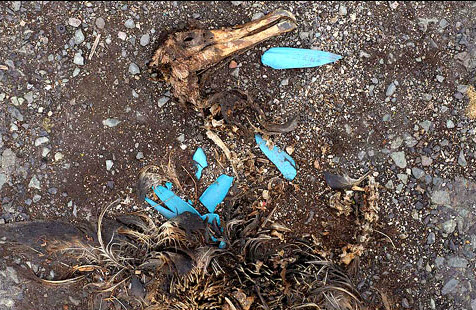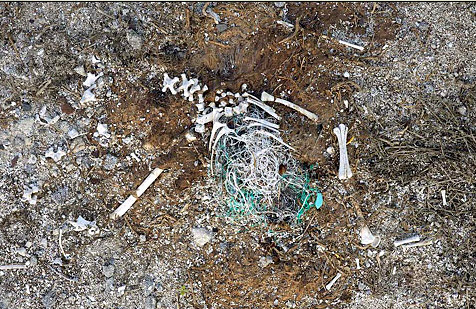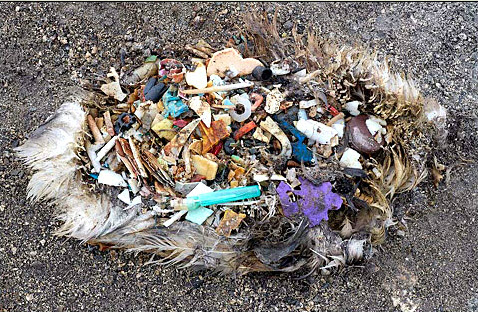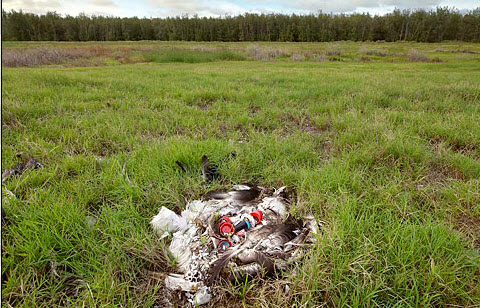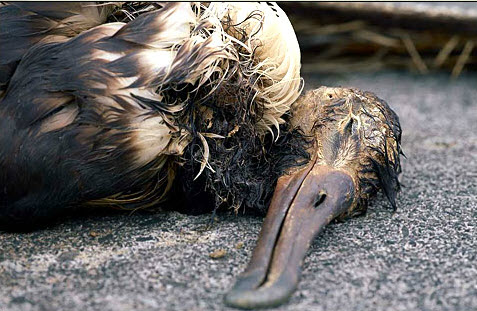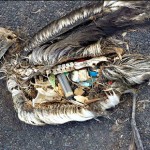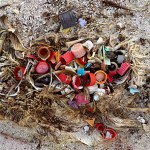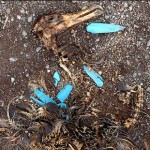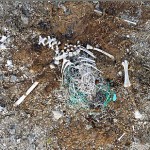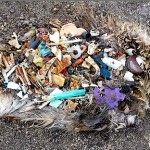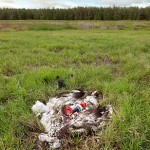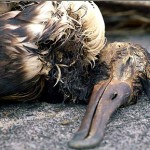Endangered Species International starkly warn us that:
“Millions of tons of plastic debris are ingested by hundreds of animal and fish species, clogging their digestive systems and infusing their systems with chemicals. More than 180 species of animals have been documented to ingest plastic debris. The ocean is the world biggest plastic dump with garbage areas twice the size of Texas.”
Photographs © Chris Jordan.
The independent (21 Dec 2014) reports
“The world’s leading expert on the poisoning of the oceans said he was “utterly shocked” at the increase in plastic floating on the sea in the past five years and warned that it potentially posed a bigger threat to the planet than climate change.
Charles J Moore, a captain in the US merchant marine and founder of a leading Ocean research group, has just finished his first in-depth survey of the Great Pacific Garbage Patch – one of five major expanses of plastic drifting in the world’s oceans – since 2009.”
Plastics are now one of the most common pollutants of ocean waters in the world. Pushed by winds, tides and currents, plastic particles form with other debris into large, swirling glue-like accumulation zones, known to oceanographers as “gyres”, which comprise as much as 40 per cent of the planet’s ocean surface, said Captain Moore, who founded the Algalita Marine Research Institute in Long Beach, California.
In a previous study of Southern California’s urban centres, he calculated that they spilled 2.3bn pieces of plastic – from polystyrene foam to tiny fragments and pellets – into the area’s coastal waters in just three days of monitoring.
Once in the sea, the plastics biodegrade extremely slowly, breaking into tiny fragments in a centuries-long process. During this period, they entangle and slowly kills millions of sea creatures, while hundreds of species mistake the plastic for food, ingesting toxicants that cause liver and stomach problems in fish and birds and often choke them to death.
“We suspect that more animals are killed by vagrant plastic waste than by even climate change – a hypothesis that needs to be seriously tested,” Captain Moore said.
The Trash Vortex
The trash vortex is an area the size of Texas in the North Pacific in which an estimated six kilos of plastic for every kilo of natural plankton, along with other slow degrading garbage, swirls slowly around like a clock, choked with dead fish, marine mammals, and birds who get snared. Some plastics in the gyre will not break down in the lifetimes of the grandchildren of the people who threw them away.
Accumulating ‘microplastic’ threat to shores
Microscopic plastic debris from washing clothes is accumulating in the marine environment and could be entering the food chain, a study has warned.
Researchers traced the “microplastic” back to synthetic clothes, which released up to 1,900 tiny fibres per garment every time they were washed.
Earlier research showed plastic smaller than 1mm were being eaten by animals and getting into the food chain.
The findings appeared in the journal Environmental Science and Technology.
“Research we had done before… showed that when we looked at all the bits of plastic in the environment, about 80% was made up from smaller bits of plastic,” said co-author Mark Browne, an ecologist now based at the University of California, Santa Barbara.
“This really led us to the idea of what sorts of plastic are there and where did they come from.”
Dr Browne, a member of the US-based research network National Center for Ecological Analysis and Synthesis, said the tiny plastic was a concern because evidence showed that it was making its way into the food chain.
“Once the plastics had been eaten, it transferred from [the animals’] stomachs to their circulation system and actually accumulated in their cells,” he told BBC News.

